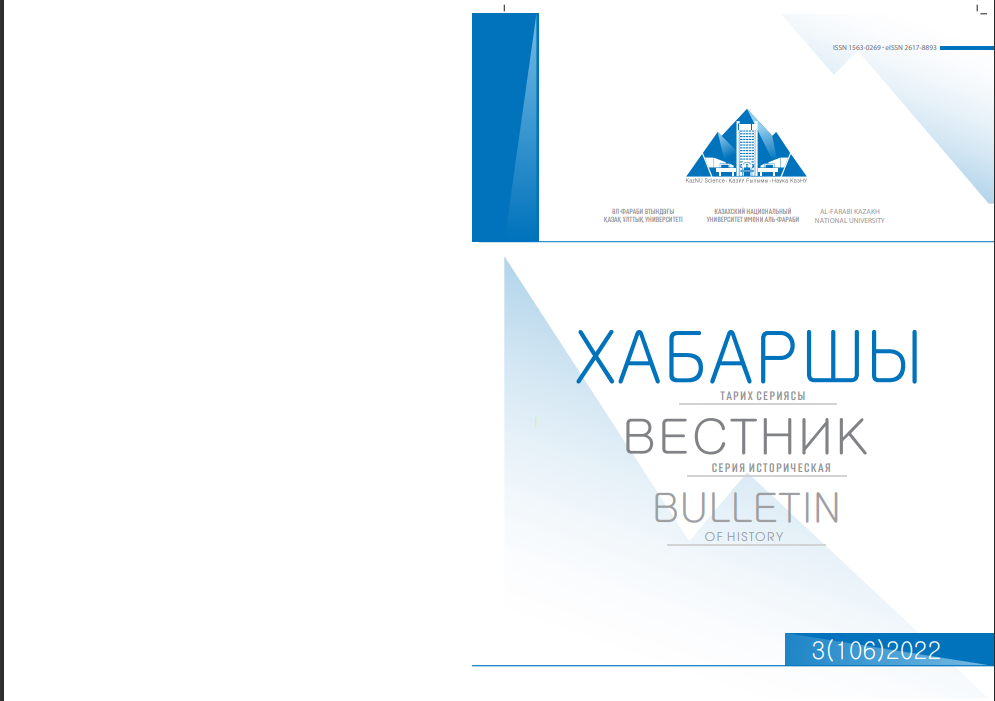The kipchak factor in the Golden Horde
DOI:
https://doi.org/10.26577/JH.2022.v106.i3.05Abstract
The purpose of the study: based on the analysis of information from written sources and historiographic materials, to consider the influence of the Kipchak factor on the process of Kipchakization of the Mongols in the Golden Horde. Research materials: the work based on the study and analysis of materials of written monuments and historiographical literature. Research results and scientific novelty: it is revealed that the process of assimilation of Mongols into the Kipchak ethno-cultural environment took place in three chronological stages – from the conquest of Deshti Kipchak by Genghis khan and his descendants to the formation of the Ak Horde state on a local ethnic basis, which became the forerunner of the Kazakh Khanate. These stages reflect the processes of the struggle of the Kipchak and Mongol cultures, their state traditions, as well as complex ethnic processes in the Turkic-Mongolian tribal system/ Eventually, the Kipchak culture and state traditions prevailed over the Mongolian ones, and in ethnic terms the process of assimilation of the Mongolian nobility and its entourage into the Turkic Kipchak environment took place. The five main factors that influenced the process of Kipchakization of the foreign invaders in the Golden Horde state are identified (kinship, demographic, foreign policy, domestic policy, and culture). The process of assimilation of the Mongols into the Kipchak ethno-cultural environment should be examined as complex, considering all the indicated factors in connection with the Steppe civilization and the specifics of the Turkic and Mongolian nomadic societies. The results obtained are important for understanding the history of the Great Steppe as the history of the continuity of nomadic ancient Turkic traditions and culture from the Hunnic Empire and the Turkic Khaganate to the formation of the states of the Turkic peoples of Central Eurasia




